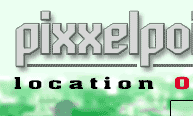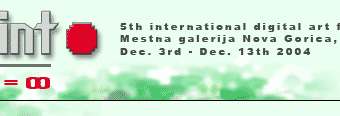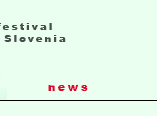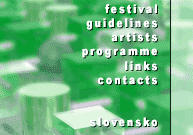
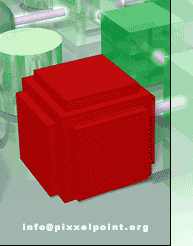

- Ursula Biemann (Switzerland)
Contained Mobility - Bureau d'etudes
Leonore Bonaccini, Xavier Fourt (France) - Eastwood (Serbia and Montenegro)
Civilization IV � Age of Empire - Ewen Chardronnet (France)
�Semaphore�: Euro-Nav - Miha Ciglar (Slovenia)
- Jaanis Garancs (Latvia)
Big Brotherhood Browser - Lina Kova�evi� (Croatia)
Mail circle(s) - Son:da (Slovenia)
- Tuomo Tammenp�� (Finland) + Tamas Szakal (Hungary)
Float - Pall Thayer (Iceland)
PANSE - Version magazine
The Map of the World - List of accepted works to Pixxelpoint 2004
Ursula Biemann (Switzerland)
Contained Mobility
DVD, 21' 2004
Soundtrack: Roland Fisher
Born in 1955 in Z�rich, Switzerland; lives and works in Z�rich.
Through the history of Anatol K. Zimmerman, the video narrates a temporary, transnational and highly informed subjectivity brought forth by the post-humanist condition of crossing into Schengen territories.
Anatol comes to signify the itinerant body, probing the protocols of access in just about every country in Europe. He moves through non-civil places, waits for status in off-social-spaces, and lives in a condition of permanent not-belonging. Schengen politics, exasperated by 9/11, has triggered a wave of new technologies in the navigation information systems and vessel and container traffic surveillance. But we see sophisticated methods and technologies develop on either side: on the part of the authorities to discipline the movement of goods and people, and on the part of the passengers to outwit the restrictions and achieve mobility and security. There is an ongoing struggle between disciplining mobility and the desire for self-determination./ Contained Mobility/ addresses both strategies and suggests their correlation, using the shipping container as the site for this geographic performance, for it denotes a quality of confinement and enclosure while implying, at the same time, systematized worldwide traffic.
www.geobodies.org
Bureau d'etudes
Leonore Bonaccini, Xavier Fourt (France)
World Government Map
With its work Bureau d'Etudes continues a tradition that was very popular in the 1970s and dedicated to map financial structures on a national level. Yet while this early attempts came to a standstill in the 1980s the French art group picked up this trend and started to map new issues of world governance. To this end Bonaccini and Fourt develop pictographic installations that deal with themes such as networks of data-gathering systems, bio war or global resistance movements. They visualize the distribution of power in its various forms, political, cultural and financial on a global basis and show the interrelations between the different actors involved. Often Bureau d'Etudes develops its installations in collaboration with the cultural theoretician and journalist Brian Homes. Founded in 1998 the Paris based Bureau d'Etudes is an artist duo that consists of Leonore Bonaccini and Xavier Fourt, both French media artists. Bureau d'Etudes concentrates on mapping various issues of world governance.
bureaudetudes.free.fr
utangente.free.fr/anewpages/new.html
Eastwood (Serbia and Montenegro)
Civilization IV � Age of Empire
computer game
The name of the game, "Civilization IV" is questioning the copyrighting of the word "Civilization" by Sid Meyers & Co. which should be common property for the whole of humanity.
www.eastwood-group.net
Ewen Chardronnet, born 1971 in Brittany, France, studied science and has been working as weather analyst and radio&radar operator for coast guards before moving to Paris to study journalism and information systems. He's been active member of the Association of Autonomous Astronauts during its existence (1995-2000) and published in 2001 an anthology about the network, "Quitter la gravit�" (leaving gravity) for the Editions de l¹Eclat (www.lyber-eclat.net). He has released electronic music together with Ubald Hirch under the XKV8 project and performs in various context. In 2000 he co-founded the art agency Ellipse and has been collaborating in several projects including Acoustic Space Lab, Signal Sever, Universit� Tangente and World-Information.Org. He collaborates regulary with Marko Peljhan and has been a key member for the Makrolab projects in Scotland, Venice and Helsinki. He took part of the MIR 2003 zero-gravity parabolic flight campaign. He won together with RIXC, Radioqualia and Peljhan the Leonardo-@rt Outsiders New Horizons Prize 2003 for the ACOUSTIC SPACE LAB - OPEN SKY installation during the "Space Art" exhibition at the Maison Europ�enne de la Photographie in Paris. His last project called "Semaphore" is an environemental, cartographic and psychoartistic work on the reproduction and conversion for civilian purposes of the role played by the maritime Control Towers (radio sounds & radar imagery monitoring).
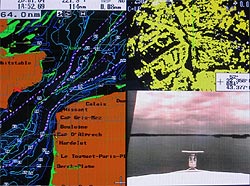 Semaphore is an environemental, cartographic and psychoartistic project on the reproduction and conversion for civilian purposes of the role played by the maritime Control Towers (radio sounds & radar imagery monitoring). The Semaphore project is interested in building tools and open systems for grassroots organisations that are concerned by migration assistance, maritime ecology and spectrum ecology. It project aims to investigate the role of the semaphores (Semaphores for the control towers on the coasts), and their use of radio communications, radar, sonar, meteorology, sea rescue and military surveillance. To investigate this, Ewen Chardronnet took ferry lines, documenting the traffic and tracking the route with a GPS ; explored the coasts and visited the Dunkerque Port Control Tower ; participated in a thug boat mission to drive a 200 m tanker to the port of Dunkerque. Together with Aljosa Abrahamsberg, they used radio scanners to map the acoustic space of radio communications of the region during two visits in Dunkerque and Rotterdam, where they also temporarly installed and used the trust-system 77 Radar Unit of slovenian art agency Projekt Atol.
Semaphore is an environemental, cartographic and psychoartistic project on the reproduction and conversion for civilian purposes of the role played by the maritime Control Towers (radio sounds & radar imagery monitoring). The Semaphore project is interested in building tools and open systems for grassroots organisations that are concerned by migration assistance, maritime ecology and spectrum ecology. It project aims to investigate the role of the semaphores (Semaphores for the control towers on the coasts), and their use of radio communications, radar, sonar, meteorology, sea rescue and military surveillance. To investigate this, Ewen Chardronnet took ferry lines, documenting the traffic and tracking the route with a GPS ; explored the coasts and visited the Dunkerque Port Control Tower ; participated in a thug boat mission to drive a 200 m tanker to the port of Dunkerque. Together with Aljosa Abrahamsberg, they used radio scanners to map the acoustic space of radio communications of the region during two visits in Dunkerque and Rotterdam, where they also temporarly installed and used the trust-system 77 Radar Unit of slovenian art agency Projekt Atol.
Euro-Nav
 For the Pixxelpoint Festival, the installation focuses on the triangle Calais-Dover (FR-UK), Hull (North-east UK) and Europort-Rotterdam (NL). This is the region where all the ships converge, a maritime crossroads, with boats heading towards those ports, the North Sea and the Baltic Sea, the Channel and the Atlantic. The Calais-Dover pass is the narrowest part of the Channel (where the EuroTunnel passes underneath the sea) and carries the most important cargo traffic in Europe. Tankers, supertankers, and military boats pass in front of Calais. Calais is also the place where refugees converge (the recent affair of the Sangatte camp), trying to enter England illegally via the Tunnel or the Ferries. The work has also been inspired by the story of the Prestige oil Tanker. The Prestige oil tanker left Ventspils (Latvia) and passed by Dunkerque Port (near Calais and Belgium border) before crashing on the coast of Portugal. The Prestige is one of many ships that collect oil sent by train from Russia to Ventspils harbour(Latvia), and then head towards the Atlantic. But as we know, often international maritime laws are not well respected, and irresponsible oil companies have contributed to many black seas on this route in the past 30 years.
For the Pixxelpoint Festival, the installation focuses on the triangle Calais-Dover (FR-UK), Hull (North-east UK) and Europort-Rotterdam (NL). This is the region where all the ships converge, a maritime crossroads, with boats heading towards those ports, the North Sea and the Baltic Sea, the Channel and the Atlantic. The Calais-Dover pass is the narrowest part of the Channel (where the EuroTunnel passes underneath the sea) and carries the most important cargo traffic in Europe. Tankers, supertankers, and military boats pass in front of Calais. Calais is also the place where refugees converge (the recent affair of the Sangatte camp), trying to enter England illegally via the Tunnel or the Ferries. The work has also been inspired by the story of the Prestige oil Tanker. The Prestige oil tanker left Ventspils (Latvia) and passed by Dunkerque Port (near Calais and Belgium border) before crashing on the coast of Portugal. The Prestige is one of many ships that collect oil sent by train from Russia to Ventspils harbour(Latvia), and then head towards the Atlantic. But as we know, often international maritime laws are not well respected, and irresponsible oil companies have contributed to many black seas on this route in the past 30 years.
Miha Ciglar is a composer and sound artist currently studying at the University of Music and Dramatic Arts in Graz, Austria. Originally from Maribor, Slovenia, Ciglar now lives and works in Western Europe. Since 2001 he has performed his own compositions for saxophone, guitar, vibraphone, double bass, electro-acoustical performances, interactive dance performances, computer music and audiovisual installations at many art festivals all around the world.
www.ciglar.mur.at/index.html
Jaanis Garancs (Latvija)
Big Brotherhood Browser
Fictional scenario about a country, where all it's citizens since birth get implanted personal identity chip and permanently replicate many of their sensory experiences to governmental, public and private networks. Several levels of shared privacy create multiple presences, allowing network clients eg. to locate someone the city or "visit" a distant party with "remote eyes" (implant cameras), and "remote ears" (microphones) weared by "agents". The installation presents this scenario as an interactive story, where the visitor encounters something like a "navigation console" for the "Big Brotherhood Browser" where one can have a glimpse into various modelled situations and experience that through computer-synthesized stereoscopic (3D) image and surround sound.
www.garancs.net/en/
cellulae.x-i.net/bbb
Lina Kova�evi� (Croatia)
Mail circle(s)
Mail circle(s) is an application by means of which the contents of one's 'mailbox' is being visualized. In designing the 'interface', it adopts the principles of naming and the electronic mail. Each mail is assigned a graphic symbol according to its contents. Since each mail is presented according to certain parameters (eg whether a mail has already been read, who is the sender, what is its size in Mb, the date, the 'mailing list' or the 'Spam') it functions as a graphic element in a dynamic folder which in the real time shows the state of the 'mailbox'. The connections between different mails (RE:, Fwd:) are visualized by means of lines and there is also a key to the adopted symbols. Eg sending 'spams' will result in an increased intensity of the yellow as well as in the changed position and size of the elements on the coordinates. In this way the 'mailbox' holder and the sender mutually create a visual whole which changes according to their communications. The Mail circle(s) in its own peculiar way features the social life of the 'mailbox' holder. It can be used as a comparative model for research into individual's communication and social structures in the network, or simply as a 'screen saver' which reminds us when we have subscribed to too many 'mailing lists'.
www.editthisbanner.net
And what have the drawings in common with spatial and sound instalations? The effect of humming, disturbances, noises. That is why the image of socket is genial. In spite of still life atmosphere in an involuntary expectance of connection, we hear the electric noise.
connected.mur.at/sonda/
Tuomo Tammenp�� (Finland) + Tamas Szakal (Hungary)
Float
Locative sound installation for ISEA ferry
In FLOAT, the ship is the play-head and the route is the track. The surrounding islands build the score of the sound installation. Within a predefined framework the ship plays the track as it moves from on city to the other. Taking a ferry on the Baltic Sea is usually just transportation or entertainment on board. In either case, the sea, the location, the depth, the surroundings is insignificant. This sound installation makes all the invisible dimensions and the silent layers of data, audible. All streams of data: the GPS coordinates, distance to islands, depth, direction and speed are translated to sounds and sound controlling filters in real time. The result is a slowly developing soundscape that invites the traveler to listen to it frequently and to take a dose of the moment. We create an experience where the listener is aware of hearing the location in the middle of nowhere.
www.needweb.org/box/float/
PANSE is an acronym and stands for Public Access Network Sound Engine. It's a streaming audio program with a built-in tcp server. It's meant to be an open platform for experimental interactive audio-visual netart and is open to all. So-called "modules" (clients) can be created using Flash, Java, Perl or whatever else you can think of. Messages can be sent to it to control the highly flexible audio that is set up as two 16 step sequencers, a monophonic synthesizer and an effects generator. But it also streams out numerical data about the audio being played. This data can be used to control visual representations. It's very interesting to see how the design of an interface effects the way people interact with such a project. As with my previous projects, PANSE is multi-user based, so if more than one person is interacting with it at the same time, they will see and hear what the others are doing. This is why I prefer to call them modules rather than clients. It's like a modular synthesizer where seperate units control seperate aspects of what's going on. In PANSE, not all of the interfaces allow control over all parameters. In fact, currently there is only one interface that allows control over all of the different parameters.
this.is/pallit/
Version magazine
The Map of the World
Members: Gabriela Vanga, Ciprian Muresan, Mircea Cantor
The capitals attached with magnetic supports can be moved on the map's surface. The idea took shape in 1999, while one of the group lived in France and the others still in Romania. In the middle of a chat it occurred to them ... what if Bucharest would be in France? This was one of the departure points of this project: the desire of moving, of changing spaces, of re-designing others` contexts. As Deleuze said "areas of contact." From here they tried to invent a tool for dialogue and the result is expressed in THE MAP OF THE WORLD. They call it a tool, because they don't consider it an "art object." but rather an 'auxiliary' for debates, interventions or workshops linked to different issues such as globalization, cultural emigration, tourist standardization, trajectory and different kinds of transgressions.
They presented THE MAP OF THE WORLD for the first time at FRAC ALSACE, under the frame of a conference. The public came and played with it. The playful part of the project has an important meaning for them, because it lightens what could be extreme and relevant attitudes of critical subjectivism which underlines obvious opinions and reactions to the "clich�s" of the media. For example people moving Jerusalem as an alternative to Washington is permitted more easily within the framework of a game, but could be problematic in the media. By moving the capitals, the people expressed an opinion, they verbally accompanied their choice: moving London to Baghdad, substituting Paris by Alger and Tunis, or moving Monaco to the South Pole in order to cool it down. There was a similarity with The Treaty of Versailles where maps of influences were made, overseeing the order of the world.
www.versionmagazine.com
List of accepted works to Pixxelpoint 2004:
Behrens Marc - Kosovo Requiem - Cerebral
Devens Paul - YSRL
James Wyness - Dislocation
Kovacz Balasz - Spatiophonic Study
Enter your e-mail to receive our newsletter.
You will be able to unsubscribe the newsletter anytime following the instructions on every email we'll send you. The newsletter is sent a couple of times a year.
